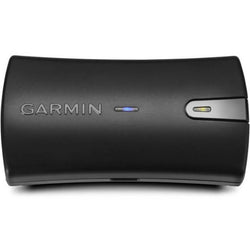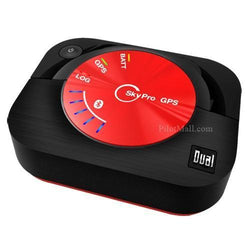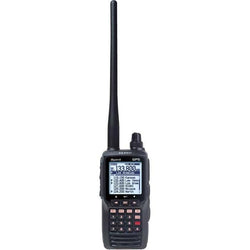What’s one of your least favorite things about being a pilot? If you said, “Keeping current with changing regulations,” you’re not alone, and an industry re-defining set of regulations is about to go into effect.
The FAA bills ADS-B as, “an environmentally friendly technology that enhances safety and efficiency, and directly benefits pilots, controllers, airports, airlines, and the public.”
On the other side of the fence are those who see ADS-B as a complex, confusing, and expensive alternative to standard radar.
The important thing is this: whatever your personal opinion on the matter, if you are a pilot flying in ADS-B rule airspace, your aircraft must comply with regulations.
Now you probably have a few questions like, “What is ADS-B airspace?” or “What type of device do I need to install to meet ADS-B requirements?” You may be wondering, “How much will it cost to make my aircraft ADS-B compliant?”
Keep reading for these answers and more, plus we will share our recommendation for an easy, low cost product solution that will have you ADS-B compliant.
First, let’s start with the basics.
 What is ADS-B?
What is ADS-B?
Are you ready to memorize another acronym? ADS-B stands for Automatic Dependent Surveillance Broadcast.
That is the fancy way of saying that the positions, altitude and velocity of aircraft equipped with ADS-B Out transmitters (more on those later) and a WAAS GPS will be automatically reported and broadcast at regular intervals to other ADS-B enabled aircraft and ATC.
Put simply, ADS-B provides an updated way for pilots to view each other’s positions and for ATC to manage air traffic.
Upgrading to ADS-B is an integral part of the ATC’s continuing NextGen program rollout, and the ADS-B Out system will ultimately replace radar as the primary method for separating aircraft.
The FAA 2020 Mandate
As of January 1st, 2020, the FAA has mandated that all aircraft flying in the airspace designated by 14 CFR 91.225 must have ADS-B Out avionics that meet the performance standards outlined in 14 CFR 91.227. Not following these requirements might result in being denied access to the specific airspace.
 What airspace is ADS-B required for?
What airspace is ADS-B required for?
What you really want to know is whether the ADS-B Out mandate affects you, right? The answer to that is, “Most likely.” ADS-B requirements apply to most controlled airspace including any airspace that had formerly required aircraft to have a Mode C transponder.
ADS-B Out devices are required on every aircraft with an electrical system that is operating:
- Within Class A, B and C airspace
- Above 10,000 ft MSL unless that aircraft is below 2,500 feet AGL
- In Class E airspace above 3,000 feet MSL over the Gulf of Mexico within 12 NM of the US coastline
- Within the Mode C veil (30 nautical miles) of a Class B primary airport
Class E airspace below 10,000 feet (other than the Gulf of Mexico exception) will generally not require ADS-B devices.
Want to confirm whether you will need ADS-B for the specific airspace you intend to fly in? Check out the FAA’s ADS-B transmitter maps along with their "Getting to Know Your ADS-B System" to verify requirement details.
 What are the benefits of ADS-B?
What are the benefits of ADS-B?
ADS-B In and Out work together to improve flight capabilities. Planes can receive messages from ground control and other aircraft, providing pilots with better situational awareness. This includes TIS-B and FIS-B data, as well as information from nearby planes.
ADS-B is also beneficial in non-radar environments like the Gulf of Mexico and Colorado mountains, where ground radios can be placed in difficult terrain for more accurate tracking.
It helps speed up search and rescue operations by providing precise information on an aircraft's last known location.
 Difference Between ADS-B In and ADS-B Out
Difference Between ADS-B In and ADS-B Out
Are you wondering about the differences between ADS-B Out and ADS-B In? The answer is pretty much how it sounds: one pertains to outgoing data, while the other focuses on incoming data.
- ADS-B In is valuable for receiving information, including traffic updates and weather conditions, which are transmitted from pilots with ADS-B Out and ground stations to the cockpit.
- ADS-B Out transmits information from the aircraft to Air Traffic Controllers (ATC) and fellow pilots.
What type of device do I need to meet the ADS-B requirements?
Now that you’ve established your need to meet the ADS-B requirements, it’s tempting to fall into the trap of thinking that your existing ADS-B In device makes you compliant with the new regulations, but don’t go there.
The ADS-B system includes both ADS-B In and ADS-B Out devices. ADS-B In receivers are very useful and allow you to receive important FIS-B data among other things, but you will still need additional devices to fulfill the new ADS-B Out requirements.
To be compliant, your aircraft will need to be outfitted with both a Version 2 ADS-B Out transmitter and a compatible GPS position source or a single device that fills both those roles.
ADS-B Systems
Your ADS-B Out system can be one of two types (depending on what airspace you operate in): either a 1090ES (Mode S transponder with extended squitter) that operates on the 1090 MHz frequency or a Universal Access Transceiver (UAT) on 978 MHz.
A 1090ES system is required if you will be flying at or above Flight Level 180. Below 18,000 feet MSL, either type of system checks the box.
Since most other countries operate on 1090 MHz, set your aircraft up with the 1090ES system if you plan to make international flights.
How much will it cost to make my aircraft ADS-B compliant?
The costs of ADS-B devices are coming down and – if you shop strategically – the components are available for less than $2,000 – which leads us to our next question.
 Which ADS-B device should I choose?
Which ADS-B device should I choose?
Here’s the good news you were waiting for: despite all the complexities of the ADS-B program rollout, there is a simple and cost-effective solution that will get you compliant without pricy equipment or a complex installation process.
The skyBeacon by uAvionix is an all-in-one device that integrates an ADS-B UAT Out transmitter, WAAS GPS and LED wingtip position light. The beauty of the skyBeacon is that a single unit provides everything you need to meet the ADS-B requirements and it does so while eliminating the need for a new transponder and new wiring.
The skyBeacon is compatible with your existing Mode C or Mode S transponder and it transmits data using your aircraft’s existing wiring system. You can mount your skyBeacon in just 10 minutes simply by replacing your aircraft position light with the skyBeacon.
Priced at $2000, the skyBeacon has earned our recommendation for the lowest cost solution for meeting ADS-B Out requirements.
Recap
- The FAA’s ADS-B Out is require din airspace A, B, and C.
- Most pilots will be impacted by the requirements and will need to install the appropriate systems on their aircraft.
- To meet the standards, aircraft will be required to have a Version 2 ADS-B Out transmitter and a compatible GPS position source or a multi-functional device that fills both those roles.
- The skyBeacon by uAvionix is the easiest, fastest, lowest cost solution to get your aircraft compliant with the ADS-B requirement.
- The FAA released an FAQ on ADS-B for more information.
Have airspace-related questions?
Our guides are designed to help student pilots become professional pilots and for private pilots to brush up on their knowledge and skills.
Did you find this article helpful?
Do you think we missed anything important? Let us know in the comments below!







